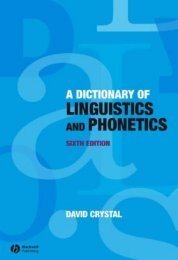url?sa=t&source=web&cd=3&ved=0CC0QFjAC&url=http://www.teachingenglish.org.uk/sites/teacheng/files/B369-Young-Learners-Activity-Book_v10
url?sa=t&source=web&cd=3&ved=0CC0QFjAC&url=http://www.teachingenglish.org.uk/sites/teacheng/files/B369-Young-Learners-Activity-Book_v10
url?sa=t&source=web&cd=3&ved=0CC0QFjAC&url=http://www.teachingenglish.org.uk/sites/teacheng/files/B369-Young-Learners-Activity-Book_v10
Create successful ePaper yourself
Turn your PDF publications into a flip-book with our unique Google optimized e-Paper software.
TeachingEnglish <strong>Young</strong> <strong>Learners</strong> <strong>Activity</strong> <strong>Book</strong><br />
Activities<br />
Alternatives<br />
• It does not have to be a fairy tale. You could provide a theme for the stories instead, for example,<br />
sports or food.<br />
• A popular version of this activity in the UK is called ‘Consequences’. In this game, the teacher<br />
gives cues and, before passing on the paper, the children fold the paper over so the next writer<br />
cannot see what has been written.<br />
So, for example, the teacher might say, ‘write the name of three friends’. The children do so, fold<br />
over the paper, and pass it on. The teacher then says, ‘write a place where they visited’. The children<br />
write, fold and pass on the paper. Then the teacher says, for example, ‘write what the first friend said<br />
when they arrived’, ‘write what the second friend said’, and so on. The teacher can give as many<br />
cues as he or she likes. The children have finally to unfold the papers to read the crazy stories.<br />
• Shawn Lajeunesse (Taiwan) suggests a similar activity called ‘Rotating Stories’. For this activity<br />
you need a picture for each group of four children, a piece of paper attached to each picture<br />
and pens/pencils.<br />
1. Put the children into groups of four and give each group a picture, a piece of paper and a pencil.<br />
2. Assign a role to each child – the Writer will write the sentences, the Checker will check what<br />
has been written, the Reader will read what the other groups have written and the Captain will<br />
<strong>org</strong>anise the group. Explain that the children must respect their roles although they can help<br />
and encourage each other.<br />
3. Each group writes from one to three sentences to start a story about the picture. When they’ve<br />
finished, they pass their picture and paper to the next group, who adds one to three more<br />
sentences to the story and so on until the pictures get back to the original group. Each rotation<br />
should be about five minutes and it is a good idea to fix a time limit. First the Reader shows the<br />
picture to the group and reads the sentences already written. The children decide together on<br />
the next sentences and the Writer writes them on the paper. The Checker then reads the new<br />
sentences for grammar and spelling and asks the teacher for help if necessary.<br />
4. When they receive their original picture back, the group writes some final sentences to<br />
finish the story.<br />
5. The group edits the story and makes a good copy of it.<br />
6. Display all the stories on the wall or around the classroom.<br />
Notes<br />
• You could ask the children to illustrate the stories before displaying them.<br />
• If you have very large classes, the children can do the activity in pairs from their seats and<br />
pass the story to the next pair. Continue until 4 or 5 pairs have added to the story and then<br />
return it to the original pair. In this case, only the roles of Writer/Captain and Reader/Checker<br />
can be combined.<br />
No resources?<br />
If you do not have enough pieces of paper for each child for the first activity, it can be done in groups.<br />
You can build the story up orally asking each child to add a sentence in turn. After a number of turns,<br />
ask all the children to write what they remember in their workbooks and to add an ending to the story.<br />
© British Council 2012<br />
31





